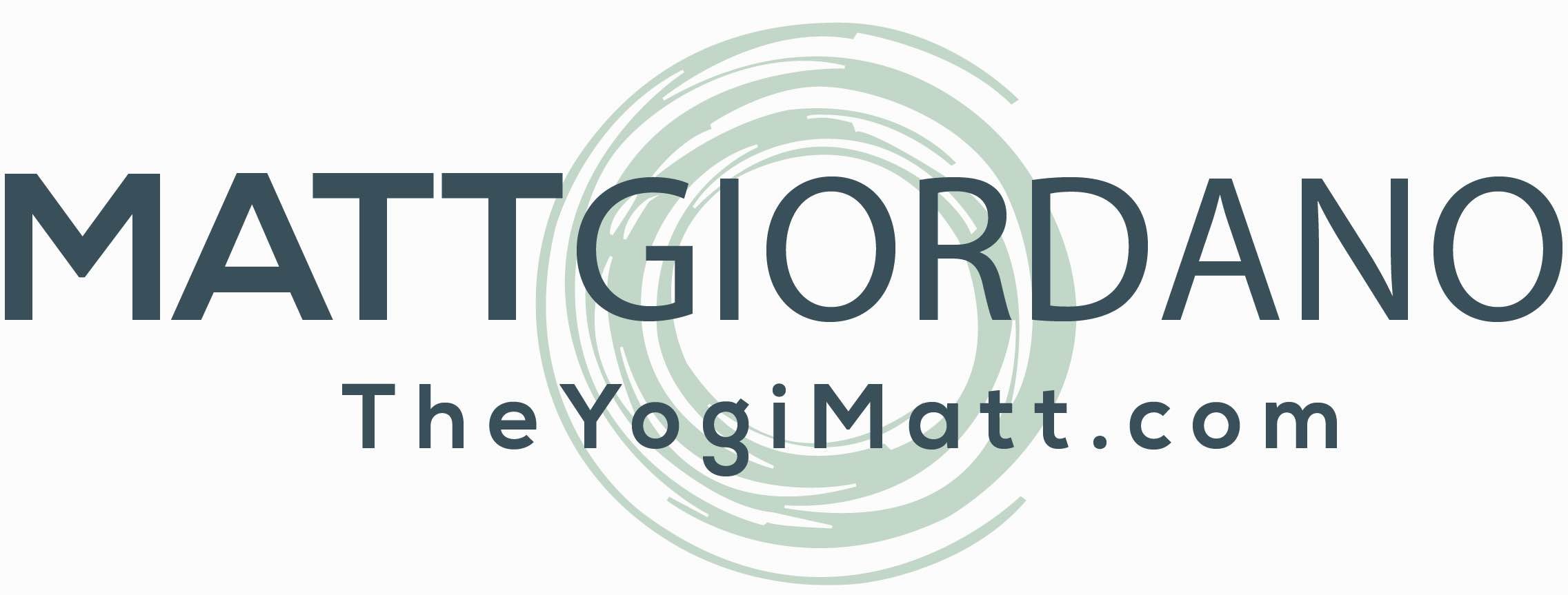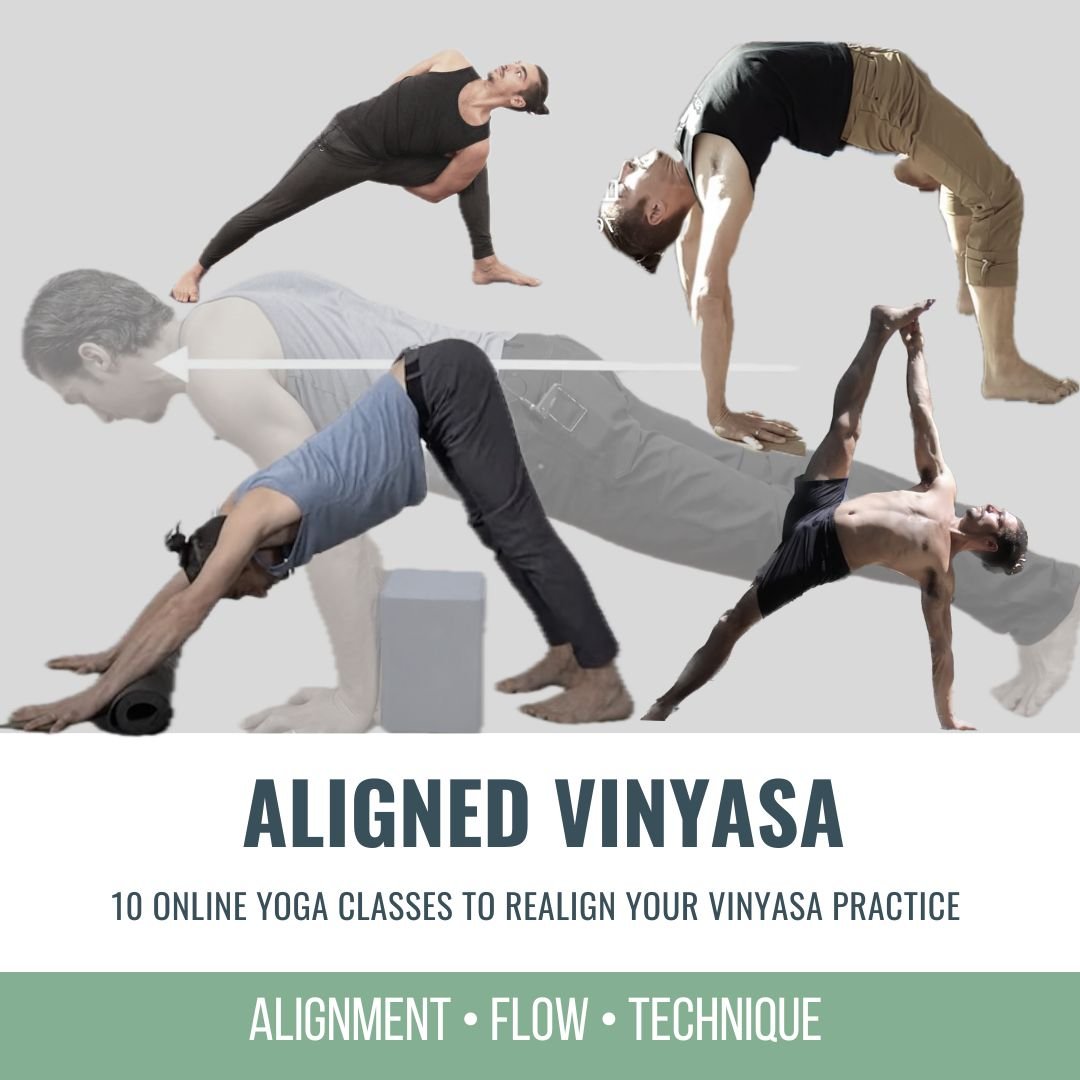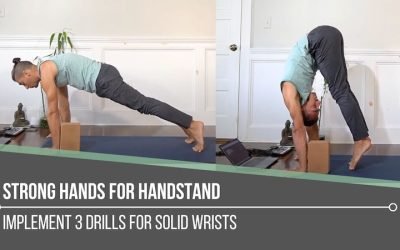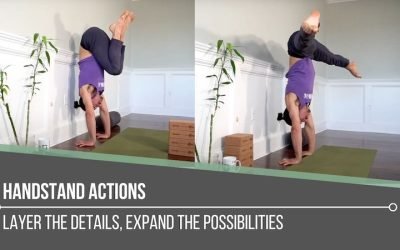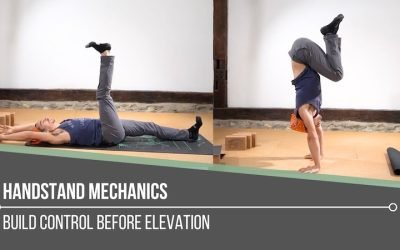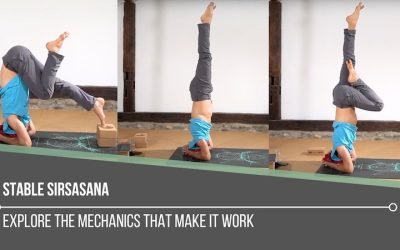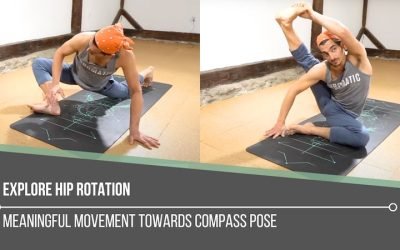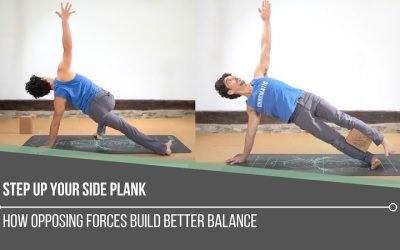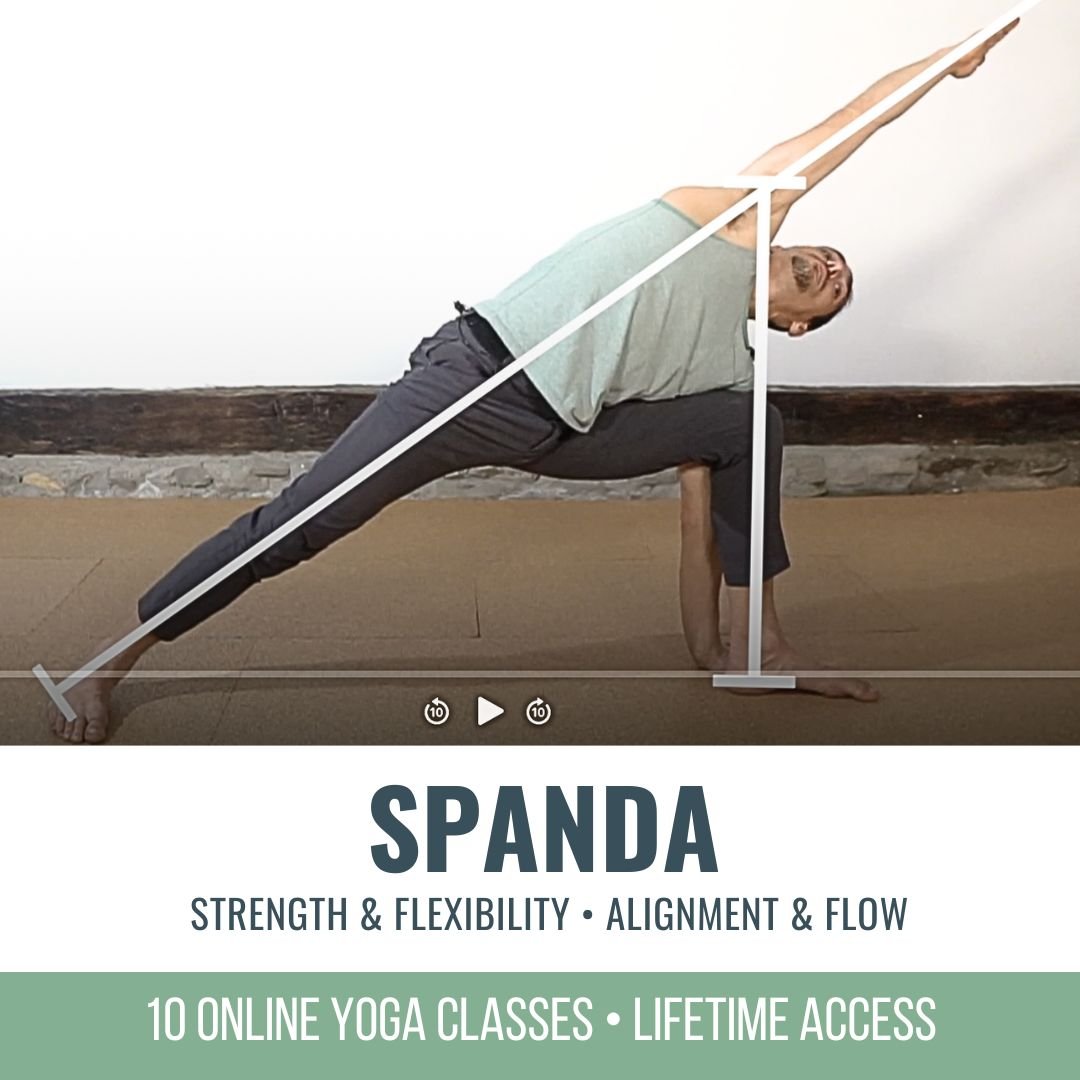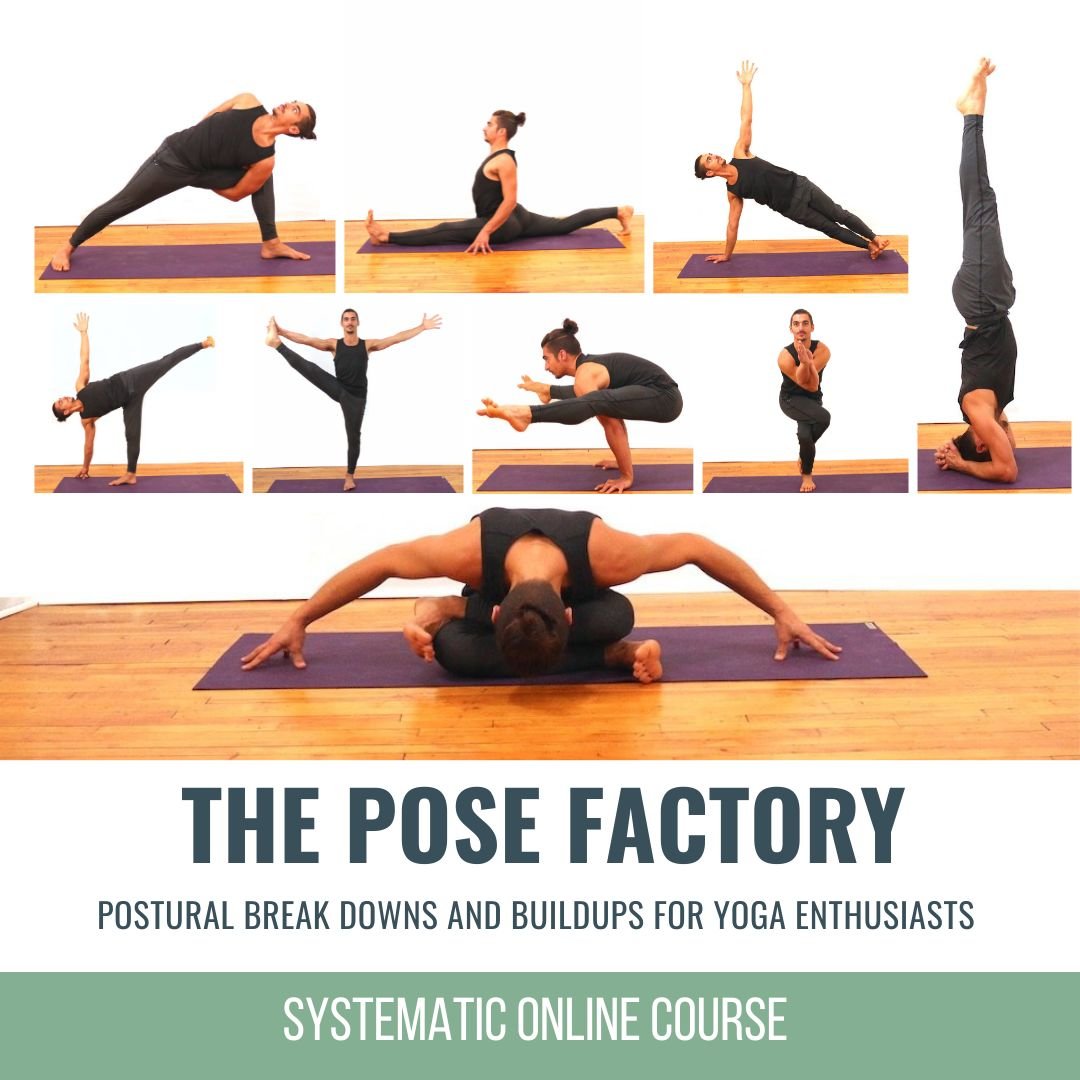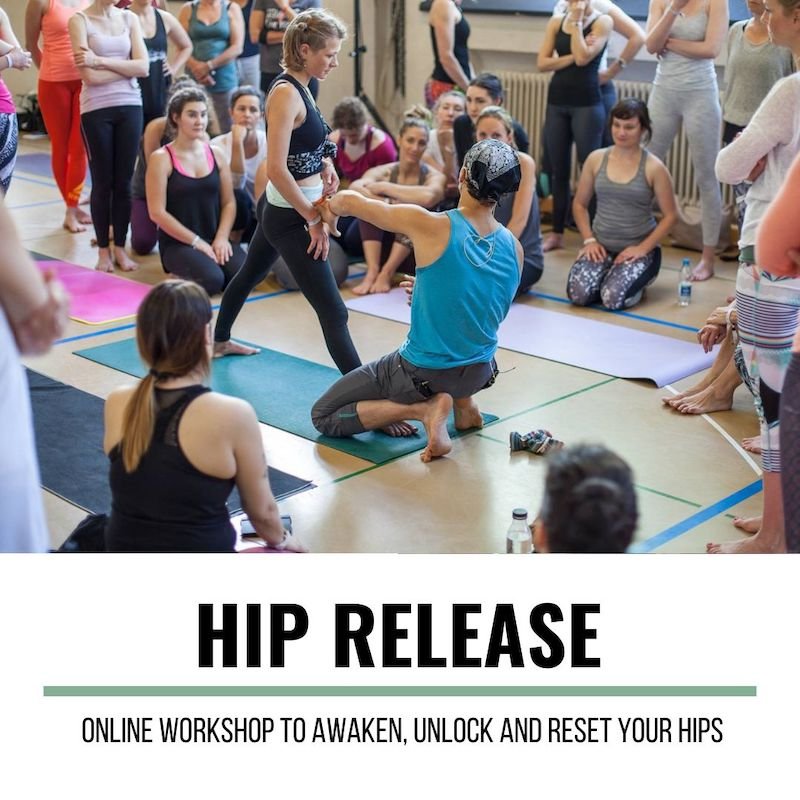Strong Hands For HandstandSTABILITYSTRONG HANDS FOR HANDSTAND When it comes to building strength for handstand, it starts at the base: our hands. Developing strong hands means targeting the wrist flexors, the very muscles that help create a trustworthy foundation....
Tight Hips
Tight Hips
HIP MOBILITY
TIGHT HIPS
When working to release tight hips, most people instinctively go straight for deep stretches. But one often overlooked area that holds a surprising amount of tension is the adductorS (the inner thigh muscles) that connect to the pelvis. While it’s common to try and stretch them out, Matt introduces a smarter approach: activate them while stretching (a technique known as a Facilitated Stretch). This technique brings stability to the hip joint, which in turn reduces strain elsewhere in the body. Why does that matter? Because tight hips can lead to issues in the joints above or below—most notably, the knees and the lower back. If the hip doesn’t move as it should, the knee or spine may compensate by moving too much. This extra movement increases friction, and friction often leads to pain. So to protect the knees and lower back, we don’t just stretch the hips, we strengthen and activate as we open them.
ALIGNED VINYASA
REGISTRATION NOW OPEN
- 10 Chromatic Yoga practices with founder Matt Giordano
- Full length 75 minute classes
- 10 Peak Postures: The Most Essential Poses of the Vinyasa Practice
- Meticulously Crafted Experiences to Enhance Your Postural Practice
- Non-dogmatic, Anatomy informed Alignment
- The Perfect Blend of Knowledge and Practice
- A Heavy Emphasis on Technique for the Poses Everyone Expects You to Know but No One Teaches
- 12 Continuing Education hours with Yoga Alliance
- 12 Accredited Hours with the Chromatic School of Yoga
- Step-by-Step instruction for increased accessibility
- Sweat, Breath, Strengthen, Stretch and Feel Amazing!
WHERE WE FIND THE PAIN
The body is a chain of interconnected parts, and pain doesn’t always show up where the problem begins. With tight hips, discomfort often surfaces in neighboring areas—the knees or the lower back—because they’re forced to do extra work. Matt teaches that when the hips lack mobility, the joints above and below take on the burden, resulting in excessive movement. That movement increases friction, and over time, friction is what creates pain. The lower back may start to compensate with excessive arching or twisting, while the knees may absorb force that should have been dispersed by the hips. By addressing the root of the restriction, unlocking and stabilizing the hips—we can reduce unnecessary motion in these vulnerable areas. The key is understanding that pain doesn’t always mean injury where it hurts. Instead, it often signals compensation patterns that stem from unresolved tension elsewhere. The journey toward ease begins where we’re stuck, not necessarily where we’re sore.
WATCH THE VIDEO
TIGHT HIPS: 5 POSTURES TO UNLOCK, UNLEASH & RELEASE
ACTIVATION OF MUSCLES
To create real, sustainable mobility, especially when working with tight hips—passive stretching alone often isn’t enough. Instead, activating the muscles while they are being stretched can lead to far greater flexibility and control. This approach taps into the body’s neuromuscular system, specifically the Golgi tendon organ (GTO)—a sensory receptor located where muscle meets tendon. The GTO monitors tension in the muscle and sends signals to the brain about the level of strain. When we actively contract a muscle during a stretch, the GTO responds by telling the brain that the muscle is under control and not at risk. In turn, the brain allows the muscle to release more deeply, giving us a wider, safer range of motion. This type of muscle activation not only improves flexibility but also teaches the body how to maintain strength and support through a greater range—making it ideal for addressing tight hips with both precision and purpose.
200 HOUR ONLINE TEACHER TRAINING
GET CERTIFIED & DEEPEN YOUR YOGA PRACTICE
- Deepen your yoga practice
- Build confidence speaking in front of groups in person and online
- Learn foundational class structures and templates
- Learn techniques for a wide range of yoga postures
- Get certified and highly qualified to teach yoga
- Yoga Alliance Globally Recognized Certification Program
TARGET THE ADDUCTORS
In today’s video, Matt shares five powerful postures to release tight hips by targeting the often-overlooked adductors—the inner thigh muscles essential for both stability and mobility. Across Lizard Pose, Warrior II, Side Angle, Skandasana, and a posture between Upavistha Konasana and Samakonasana, the unifying action is isometrically drawing the legs toward each other. Each pose, however, includes one signature cue to unlock the deepest benefit. In Lizard, hugging the front knee into the shoulder and pushing the front heel down helps to heighten the hips—a sign of proper activation. In Warrior II, Matt cues a subtle sit-back before pulling the feet in, which softens the inner thighs. Side Angle adds knee-to-arm pressure for more adductor engagement. In Skandasana, dorsiflexing the foot and dragging the heel inward (as if towards the midline) lights up the inner thigh. In the final pose, Matt emphasizes tipping the pelvis forward before hitting our full stretch, so activation leads the way.
300 HOUR ONLINE TEACHER TRAINING
GET 500 HOUR CERTIFIED AS A MASTER TEACHER
Master your skill set as a teacher through refined techniques, anatomy, biomechanics, sequencing, philosophy, meditation techniques, theming, yoga business, and much more!
- Get 500 hour certified
- Learn anatomy, biomechanics, asana techniques
- Expand your teaching skills
- Masterful sequencing and verbal delivery
- Learn meditation and breathwork techniques
- Transformative tools: theming, dharma talks, satsang
FROM TECHNIQUE TO FREEDOM
When working with tight hips, it’s easy to assume that stretching alone will bring relief—but as we’ve explored in Matt’s teachings, it’s the intentional techniques that truly create change. From targeting the adductors to activating muscles during stretching, these methods help develop strength, control, and lasting mobility. Overtime, as these techniques become ingrained in our movement patterns, we no longer need to focus on every micro-adjustment. Instead, we begin to move with greater ease and confidence, even in postures that once felt out of reach. The result is a genuine sense of freedom in the body—not just more flexibility, but a deeper understanding of how to move well. If you’re ready to explore this approach further, Matt’s May online immersion, Aligned Vinyasa, offers 10 guided classes designed to build this connection between technique and flow, helping you move smarter, safer, and more freely in every practice.
The 200 Hr. Teacher Training: Click Here to See the Next Start Date
The 300 Hr. Advanced Teacher Training: Click Here to See the Next Start Date
Article by Trish Curling
Video Extracted From: Revelation Immersion
ONLINE ANATOMY COURSE
- Accessible, exciting, and easy to learn
- Anatomy and biomechanics for yoga
- Appropriate for both teachers and students
- Learn joint alignment vs pose alignment
- Demystify yoga poses and transitions
- Release aches and pains
- Learn how to avoid common injuries
- Caters to all levels with modifications and props
- 20 hours Continued Education Credits with Yoga Alliance
- 20 hours toward Chromatic Yoga Certification and 300 Hour
- Lifetime access
Continue Learning
Strong Hands For Handstand
Handstand Actions
Handstand ActionsLEAN, GRIP, PUSHHANDSTAND ACTIONS Handstand isn’t something we conquer in a single class, it’s a layered process that demands repetition and refinement. There are certain key handstand actions that are non-negotiable: lifting the shoulders up to the...
Handstand Mechanics
Handstand MechanicsINVERSIONHANDSTAND MECHANICS Stability, strength, and coordination come together in the pursuit of mastering handstand mechanics. One of the most critical foundations is internal rotation at the hip joints, which can aid with certain entries and...
Stable Sirsasana
Stable SirsasanaHEADSTANDSTABLE SIRSASANA Creating a stable Sirsasana is less about the final pose and more about the mechanics that lead us there. From weight transfer and spinal alignment to hamstring flexibility and shoulder engagement, each layer matters. Unlike...
Explore Hip Rotation
Explore Hip RotationSURYA YANTRASANAEXPLORE HIP ROTATION Hip rotation isn’t just an anatomical concept—it’s an open invitation to become more intimate with our body’s story. In yoga, we often live in lateral (external) rotation, especially in hip-opening postures....
Step Up Your Side Plank
Step Up Your Side PlankVASISTHASANASTEP UP YOUR SIDE PLANK Side Plank might look simple, but true proficiency starts in the details. One of the keys to refining the posture is learning how opposing muscle groups create an isometric contraction—a subtle engagement that...
THE FREE TECHNIQUE PACK
When You Subscribe, You Will Get Instant Access to
- the Technique Pack: 15 yoga pose breakdowns
- exclusive online course discounts
- exclusive blogs and videos
